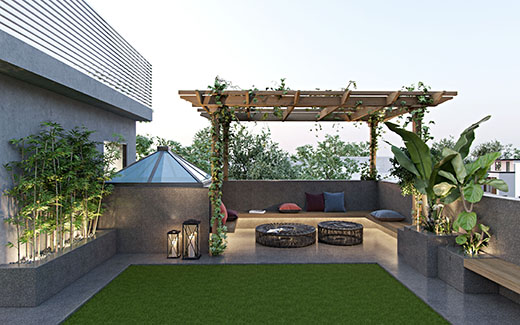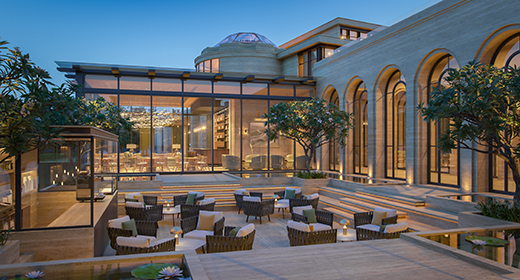Aparna Kaushik
18-Feb-2025
A look at how design in luxury spaces has transformed, embracing simplicity, nature, and sustainability in modern times.
The evolution of design in the 21st century, from ornate to organic, mirrors significant cultural, technological, and social shifts. This transition signals a move away from highly stylized, decorative forms to more natural, minimalist, and user-centred approaches.
Luxury Through Time: From Status to Experience
Luxury has always been synonymous with status, power, and, most importantly, exclusivity. In earlier centuries, luxury was tied to aristocracy and social hierarchy, where architectural grandeur was used to showcase wealth, instill confidence, and assert power. The early purpose of spatial luxury was to serve as a symbol of authority and privilege. It was a time when societal mobility was limited, and the power of the elite was reinforced through elaborate designs.
In this era of selective sovereignty, opulence was carefully guarded. Extreme measures were taken, such as controlling commissioned artworks, imposing special taxes on exotic materials, and limiting craftsmanship skills. The architectural scale and vastness of one's property were the first impressions of power. By the 17th and 18th centuries, ornate styles like Baroque and Rococo became dominant, emphasizing dramatic visual statements of wealth.

Baroque and Rococo: Grandiosity and Elegance
Baroque architecture and interiors were designed on a grand scale to awe and impress. Palaces, churches, and buildings featured vast facades, spacious interiors, and towering columns that signalled divine or royal authority. Iconic examples like St. Peter’s Basilica in Rome displayed the scale necessary to convey power.
Baroque's focus was on exaggerated ornamentation, with intricate mouldings, carved woodwork, and dramatic ceiling frescoes, creating an overwhelming sensory experience. Rococo, on the other hand, evolved as a response to Baroque's heaviness, focusing on lightness, grace, and personal pleasure. It offered a more private and individualistic aesthetic, emphasizing elegance and refinement.
The Shift to Modernism: Function Over Excess
As societal and political structures evolved, so did the concept of luxury. The Industrial Revolution brought about a wave of simplification in design, driven by the need for mass production and modernist ideals. The clean, functional designs associated with this movement rejected traditional notions of excessive decoration and waste.
Modern luxury distanced itself from opulence, prioritizing utility and efficiency. Design became about function rather than form, reflecting the growing desire to minimize excess and embrace practicality.
21st Century Luxury: Sustainability, Wellness, and Personalization
In the 21st century, luxury has evolved once again. Today, it is not defined by ostentation but by experiential value, sustainability, personalization, and a focus on well-being. Younger generations are increasingly seeking authentic experiences and ethical practices, shifting away from traditional status symbols.
The trend toward organic, luxurious design is a response to these evolving values. A growing appreciation for natural materials and sustainable practices reflects a heightened awareness among both consumers and designers. Organic principles in design seek to harmonize architecture with nature, creating spaces that are not only functional but also reflective of a healthier, more conscious state of being.

Embracing Organic Design Principles
At AKDG, we believe in creating spaces that draw unforced connections with nature. Generous natural light, ample ventilation, and functional layouts are fundamental to our approach. We strive to ensure that each design reflects the healthiest state of being, using organic forms that align with both environmental sustainability and personal well-being.
Sustainable designs are rooted in timelessness and longevity. Our goal is to accentuate the natural qualities of a space, enhancing its beauty through thoughtful design and functionality. We carefully select materials from ethical vendors, ensuring that each element is appropriate for the specific site and client needs.
Looking Ahead: The Future of Luxury Design
As we look to the future, we foresee a convergence of innovation and sustainability in design. Wellness-centric spaces, infused with personalized, experiential touches, will shape the next era of architecture. Authentic luxury is no longer defined by lavish displays of wealth, but by the gentler, more responsible gestures of design that respond to both environmental and human needs.
In the end, true luxury in the 21st century is felt in the thoughtful, conscious creation of spaces that elevate both the environment and the people who inhabit them.

By Smriti Choudhary